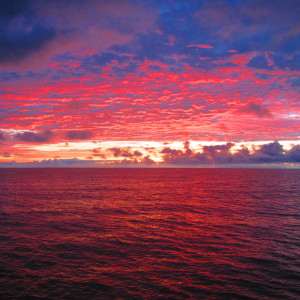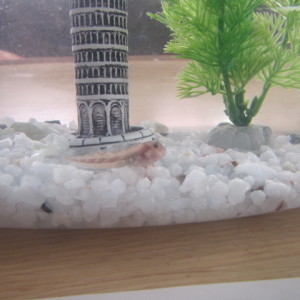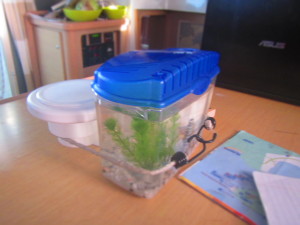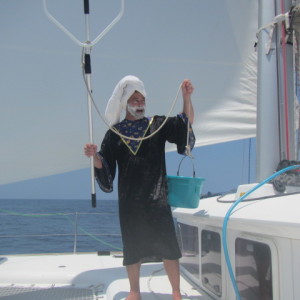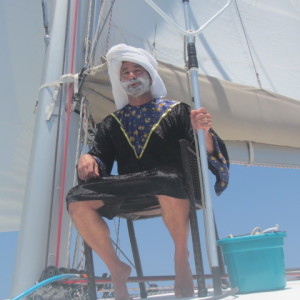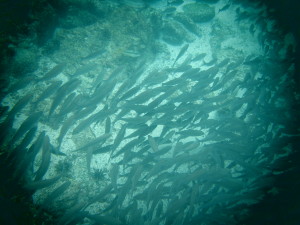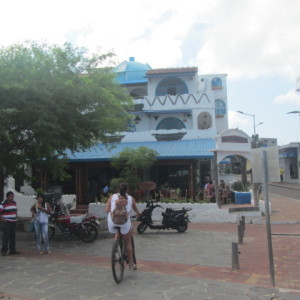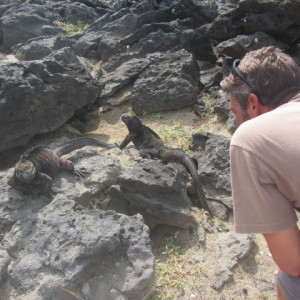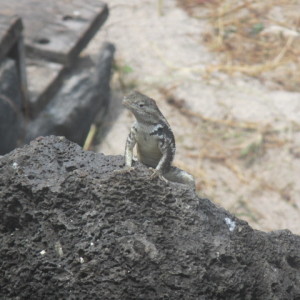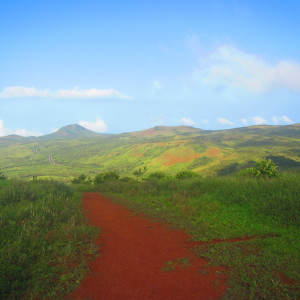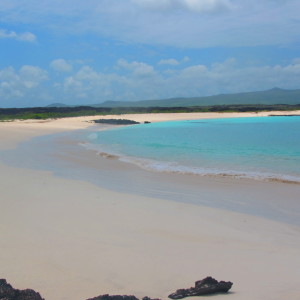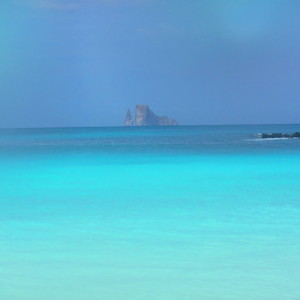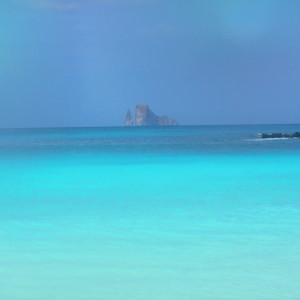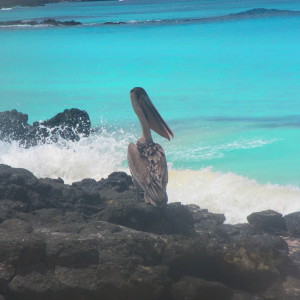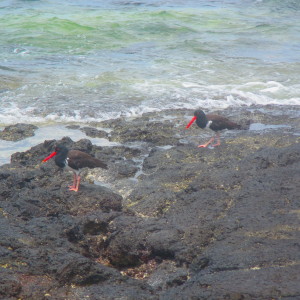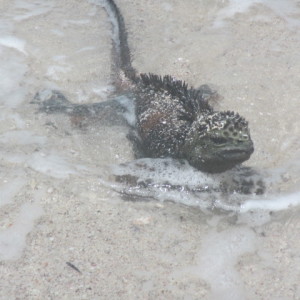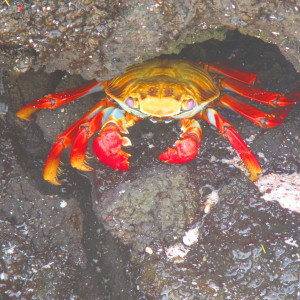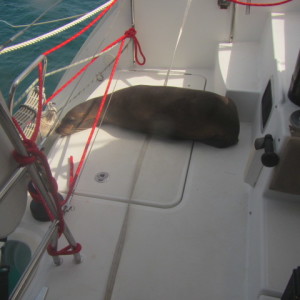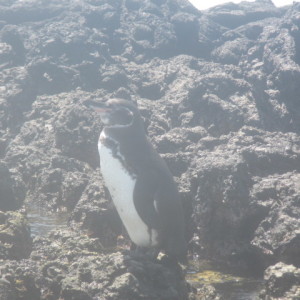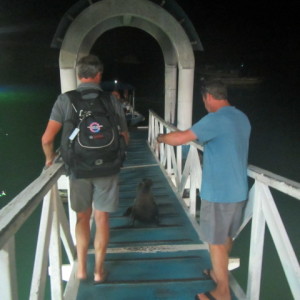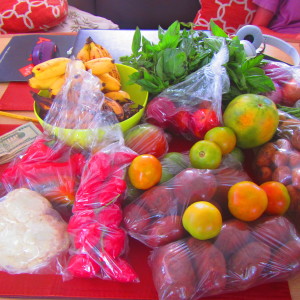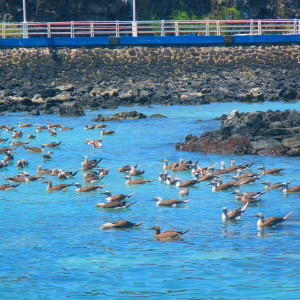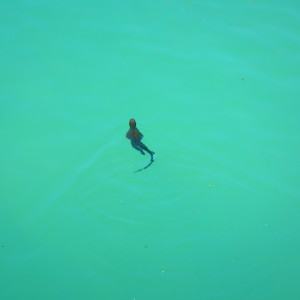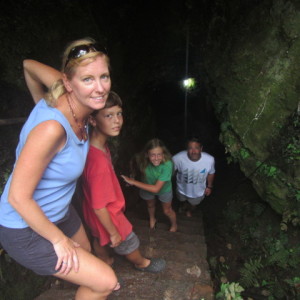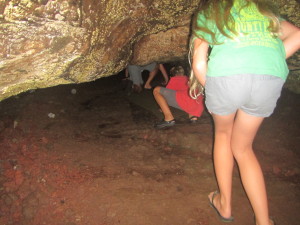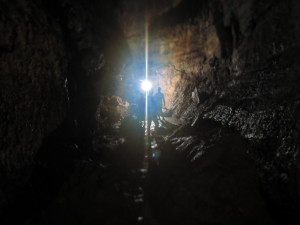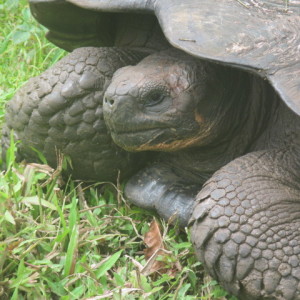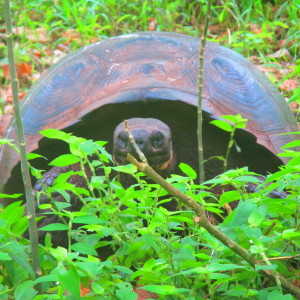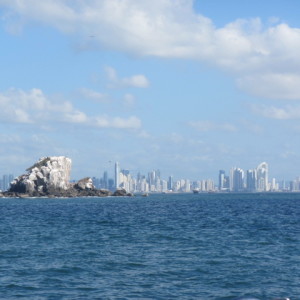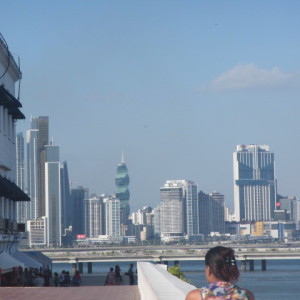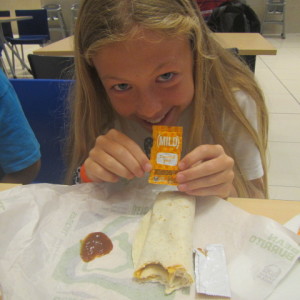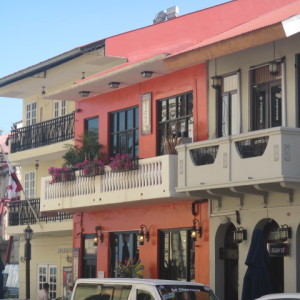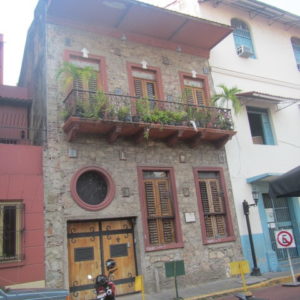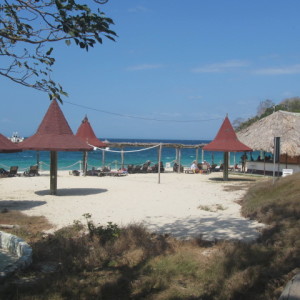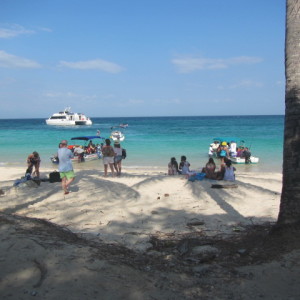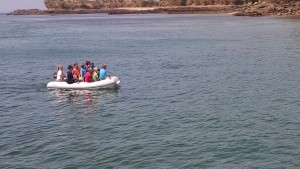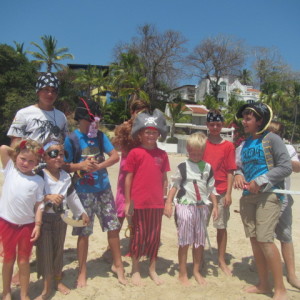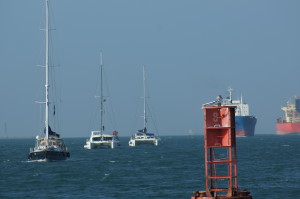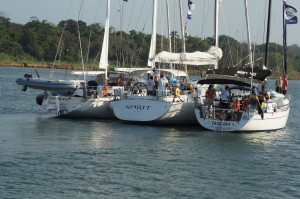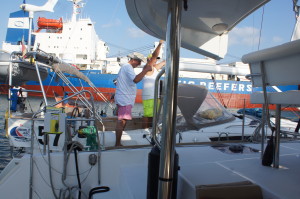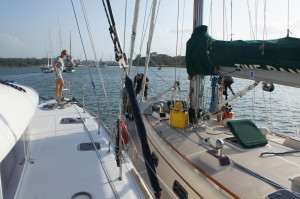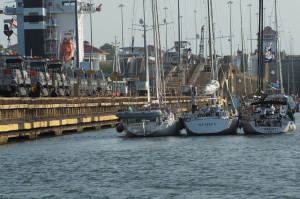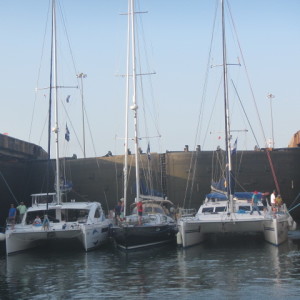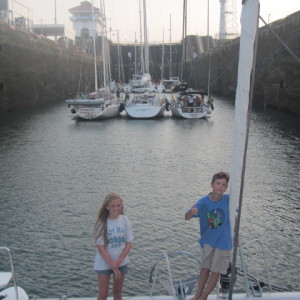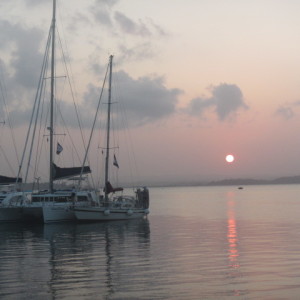Three long, long, long, long weeks at sea. One of the first things we did on this passage—only after a day or two—was to change our watch schedule. Everyone has to figure out what works for them, but our four hour watches at night weren’t cutting it. I never felt well rested on passage. Dan and I originally alternated every other night: one night he did 8 pm to midnight and 4 am to 8 am and I did midnight to 4 am, and the next night I took the two watches and he took the one. I don’t mind staying up late (night person) and Dan doesn’t mind the early morning watch (morning person), so we decided to make our schedule permanent, as follows: I did watch from 8 pm until 2 am (6 hours) and he did the 2 am until 8 am (6 hours). Most days I let Dan sleep for an extra 15 minutes or so because I had the luxury of NOT having to get up right at 8 am. Why? Ryan and Ariana handled 8 am to noon each day (2 hours each/alternating each day) and they also handled 2-6 pm between the two of them. (I did the 12-2 pm and Dan did the 6-8 pm.) The kids were never totally alone, as one of the adults would either be awake inside the boat, or dozing outside near them in the cockpit. They knew to call us if a sail was in need of trim or if there was a boat near us on the AIS (which barely happened during the whole 3 weeks).
This new schedule worked out well for us. I felt much more rested and didn’t dread being out to sea for so long. The kids did amazingly well. Ryan did school all but 4 days (it would have been six days of weekends anyway) and Ariana managed to do some—but less than Ryan because she often doesn’t feel as well as Ryan underway. In fact, Calvert has not been a good curriculum for Ariana (it has been fine for Ryan). The only science topic she hadn’t covered previously in her Calvert curriculum was Astronomy. When she finished that, everything else was redundant—the history and the grammar books and assignments were the same too. So, Dan downloaded a physics book for Ari and they have been working on that together (solving equations, etc.). She is also still completing Wordly Wise and Geometry with Teaching Textbooks (which has been a great math program for both of them). Ari and Ryan read a great deal also.
On Day 2 of our passage to the Galapagos, I was terribly seasick despite the fact the first three days were spent motoring south in calm seas trying to reach the wind. I resorted to a scopolamine patch (for the first time) which began to work within a few hours. They work for three days. I used one the entire trip except the last two days of the passage, but as a result, I was no longer seasick. At first, the patch made my eyes a bit blurrier, and a few days it rarely caused a couple of increased heartbeats, but after weighing the pros and cons, I decided it was worth it. I’m pretty sure that anyone who has experienced debilitating seasickness would agree!
The passage was very routine. I dislike routine. A LOT! (I LOVE IT…-Ari) That being said, it was better than having stormy seas and too many wrenches in our day! So, I tried to practice patience most of the time. When we only had 1,000 miles to go, I began to get a bit excited—two thirds of the way through. I read about 9 books on passage, watched a few movies, colored with magic markers in this adult coloring book the kids gave me for Christmas, slept, played Monopoly with Ryan, watched Modern Family with Ari, and cooked. And cooked, and cooked, and cooked, and baked and baked.
I made at least two meals per day (sometimes the kids made their own breakfast or lunch), and I also baked. I made a homemade cinnamon coffee cake, a giant chocolate chip cookie bar, an oatmeal cake, a yellow cake with chocolate frosting, and homemade sour cream biscuits that actually ended up more like corn bread without the corn. I also made naan bread on the grill. The grill. Yes, the grill became my best friend. Our generator had ceased working prior to our leaving the Galapagos. It was something that was to be easy to fix so Dan said he would fix it while we were underway. Unfortunately, it was not just one problem, but two, and we were without our generator for the whole trip. No laundry. And—no convection oven. I still could use the microwave off of the inverter (for heating things—not for more than about 5 minutes at a time total), but I had no real oven. Good thing I already make pizza on the grill out here sailing! Without a generator, we also had to run our engines each day to charge our batteries. We have solar which was great on sunny days when our sails didn’t blanket the sun, but most days, we still needed diesel charging. The generator is much more efficient in charging the batteries compared to our engines, but you have to work with what you have.
Which brings us to the other issues…two days into our trip, Ariana is on watch and informs Dan that there is a little tear in the main sail. Dan went to look minutes later, and already, the small tear is a huge one, going across much of the sail on the seam below the second reef line. So—now we were down to a main sail with a double-reef. We could not fly the full sail, regardless of how minimal our wind was. That was sail problem #1. A few days later we had good conditions for our Parasailor so we hoisted it up. What we didn’t notice (until it was too late) was that the shackle on the Parasailor Guy chafed the jib while it sat there rolled up on its furling. I noticed a rip in our jib. Sure enough, we unfurled it and it was torn. No more jib. That was sail problem #2. We put out our Genniker (our “Silver Bullet” that we blew out on the way to San Blas Islands and had repaired in Panama) and we were making great time. After a few days with the Genniker, the tack blew while I was standing watch at night. I looked up and I didn’t even SEE the sail because it was flying up in the air. I seriously thought we had lost it completely! I screamed down to Dan who rousted from sleep, and we managed to get the sail back down to our bow. But, what a chore…it is so loud when your sail blows off like that. It is also dark. You have to navigate around the boat and up to the bow by connecting and disconnecting your tethers, which further complicates things. So you end up screaming at the top of your lungs in the dark in the middle of the night thousands of miles offshore of any land. Are you jealous yet? Do you wish you were there with us? So that was sail problem #3. In hindsight, I guess we did have some wrenches in our very routine trip; I must be becoming an old salt…
For the last 8 days, we only had the options of a double-reefed main sail or a Parasailor for a mostly down-wind sail. We got VERY lucky. Dan headed nearly due south at the beginning of our trip to get to the wind. (He had looked at the weather wind GRIBs and south looked to have better wind.) It took us three days (traveling at only 3-4 knots the whole time…can you say painful?), but when we hit the wind, it was very consistent and we had only about 5-10 minutes of rain the entire three weeks. We had heard that others on more northern latitudes hit very inconsistent wind speed and direction and had more squalls. On latitudes more south, folks had too much wind. (At over 20 knots of consistent wind, we really need to take our Parasailor down.) Our latitude proved to be the best we could have been on. We began to have 24-hour averages of 6.9-7.2 knots per hour! We also were able to fly our Parasailor for the last week straight—never having to take it down—because our winds stayed consistent even during the night that last week. At the end of our journey, we were very ready for land, which we reached at about 2 in the morning. I will never forget the smell as we neared Hiva Oa. It was absolutely incredible. The air smelled of the flowers of a traditional Polynesian Lei and of clean earth, especially with the light rain that was hitting the island. What a welcoming! The kids were also awake at this point, and once we were anchored, we stayed up for a while despite the late hour, reveling in the completion of our longest passage.
